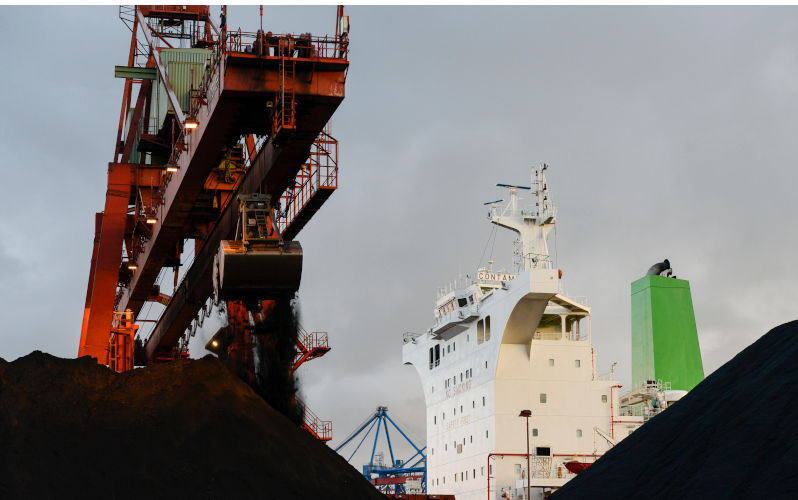Critical minerals offer a path to check US unilateralism
May 12, 2025
Trumpian trade policy promises a period of spasmodic aggression and persisting uncertainty.
What is clear, however, is that the United States’ focus will be principally on its relationship with China and that, within that relationship, critical minerals will occupy a key position, presenting both a risk and an opportunity for the trading order.
The International Energy Agency estimates that scaling up green tech to meet the Paris Agreement goal of net-zero carbon emissions by 2050 will quadruple demand for critical minerals by 2040.
The challenge of meeting this demand is complicated by concentrated supply – particularly for processed minerals where China dominates, accounting for 35% of refined nickel, 70% of refined lithium and cobalt, and 90% of rare earths.
With this conjunction of growing demand and concentrated supply occurring at a time of heightened geopolitical tension, the scene is set for market manipulation for strategic goals – via extensive state subsidies for critical mineral production and, more aggressively, through export restrictions.
Export controls on critical raw materials have risen more than five fold since 2015, with China the largest restrictor of both materials and, crucially, the technology for their processing_._
Since December 2024, China has banned the export of gallium, germanium and antimony — all of which are key to semiconductor production — to the United States. China has simultaneously strengthened export controls on graphite, which is essential for electric vehicle batteries, a principal reason why the cost of producing battery cells is some 50% higher in the US than in China. In April, in response to US President Donald Trump’s “ reciprocal tariffs”, Beijing imposed controls on seven types of rare earth elements, including gadolinium, which is used in MRI scans, as well as those used in magnets essential for drones, robots, missiles and spacecraft.
Adding fuel to the fire, China’s restrictions are also encouraging high-risk retaliation.
A widely agreed retaliatory principle in both Washington and Brussels is to reduce reliance on “systemic rivals”, that is, China, by a process of friendshoring. Under one proposal, Australia would, at the deliberate expense of China, favour in its unprocessed lithium exports an expanded G9, of which it would become a member. More broadly, US Treasury Secretary Scott Bessent has called on Western nations to “approach China as a group”.
Yet it makes no sense for Australia to penalise its most important trading partner or for the world to be split into rival trade blocs – the logical conclusion of friendshoring. This would lead to financial fragmentation and GDP loss as high as 12% in some regions.
But there are alternatives to friendshoring for critical minerals.
Part of the answer — short of Trumpian land-grabbing — is to develop efficient stockpiles and sharing of resources while promoting market-based exploration and diversification of sources. Australia has abundant uranium, nickel, cobalt, antimony and vanadium that America lacks. Recycling critical minerals will also help. There may be scope to foster what the IEA calls the strong comeback of nuclear energy, reducing demand for rare earths used for renewable power generation.
But whatever market-based measures are taken, in a world of heightened trade friction, the threat of harm from Chinese export restrictions will persist. The overriding need is for multilateral safeguards against China’s abuse of its dominant position.
This means bringing greater clarity and rigour within the World Trade Organisation to the notions of “critical shortage” and “natural resources depletion” whereby export restrictions can be justified or challenged. For this to have teeth, WTO dispute settlement needs strengthening.
In 2012, Japan successfully, if protractedly, took China to WTO dispute settlement, forcing it to back down on its export restrictions on critical minerals. Crucially, it did so with US support. That support is now lacking, though the US would be a major beneficiary, having itself in 2012 successfully appealed against Chinese raw material export restrictions.
But Washington has effectively defanged WTO dispute settlement by blocking, since 2019, the appointment of Appellate Body judges in protest at what it sees as judicial overreach and bias against disciplining China’s massive state-owned enterprise subsidies. A makeshift appeals arrangement includes China and Australia. It does not include the US.
Strengthening WTO disciplines on trade in critical minerals is a crucial step to re-engaging Washington and containing US-China tensions. But to succeed, this needs to be part of a broader overhaul of the WTO which addresses the US’ not unreasonable concerns about the organisation while facilitating dialogue between Washington and Beijing. This is a dialogue that Australia, with its vital links to both the US and China, would do well to foster.
Checking US unilateralism, of which Trump is more accelerant than architect, will mean appealing neither to US leadership nor to shared values — those days are over — but rather to the US’ genuine self-interest. Critical minerals offer a path towards doing this, helping preserve the liberal order that has underpinned three decades of growth and development built on open markets and the globalisation of production.
Republished from East Asia Forum, 7 May 2025
